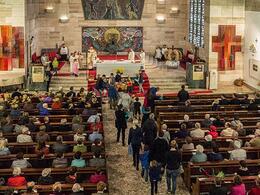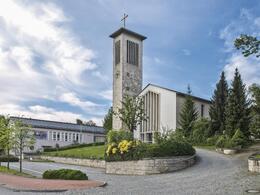Parish Church of Bad Schallerbach
4701 Bad Schallerbach

Schallerbach was originally one of four villages in the former local community and parish of Schönau.
The district experienced a rapid boom at the end of World War 1 (1918) after the drilling of the thermal spring. In the spa town of Bad Schallerbach, the construction of a parish church proved necessary after the Raphael Chapel - the first church in the village - became too small. In 1960, the parish of Schönau was renamed the parish of Bad Schallerbach. The parish complex (parish church with rectory and parish hall) was built in 1956-58 according to the plans of the local architect Hans Feichtinger. The builder was Dr. Franz Tauber, priest and pastor in Bad Schallerbach.
He built the new church with the help of donations (mainly from members of the Rosenkranzsühne Kreuzzug).
The church is a Marian church and commemorates the 100th anniversary of the Marian apparitions in Lourdes. The bronze doors by the church portal depict Mary, a woman who trusted completely in God even in difficult and sorrowful situations of her life (Queen of Sorrows - left door), who is glorified (Queen of Glory - right door), and to whom believers of all times have turned (Protective Mantle Madonna / Mother of Mercy - middle door).
The concrete stained glass window on the south facade also refers to Mary with its capital "M" and stars. The tower chapel attached to the west houses the foundation stone from the Grotto of Lourdes.
The church is built as a hall church over a rectangular floor plan with an indented, raised presbytery and a gallery. The church interior stands large and powerful, the open roof truss with visible wooden rafters and wooden roofing gives the space additional width. The appearance is harmonious due to the proportions of the golden section.
The interior decoration (windows, mosaics, altarpieces, bronze work, tabernacle, portal gates) was done by Prof. Max Spielmann, just as in the Schönau church. The colored windows, set in lead and painted with black solder, have a special luminosity due to different glass thicknesses and surfaces (Left front: Mary appears to the shepherd children in Fatima. Then the mysteries of the Glorious Rosary: Resurrection of Christ, Ascension, Mission of the Holy Spirit, Assumption of Mary into Heaven, Coronation of Mary. In the front right: Mary's apparition to Bernadette in Lourdes. The other windows represent the mysteries of the Joyful Rosary).
The room is dominated by the high altarpiece with the theme "Circle of God's light in contrast to the darkness of the world".
The stylized rainbow surrounding the Triune God represents a bridge between God and man, a sign that God never abandons man.
On the left, the viewer finds scenes from the Old Testament (fall of the angels, expulsion from paradise, Tower of Babel, the dance around the golden calf), on the right images from the New Testament (search for a hostel, infanticide in Bethlehem, stoning, Jesus before Pilate).
As a reference to the present, war and discord between people, at the front and at home, are depicted.
The lower part of the mosaic shows Mary appearing to Bernadette and the healing of a blind man and a lame man in Lourdes. Even if some of the depictions do not correspond to today's theological understanding, the entire church building bears witness to the fact that faith is able to bring strength and salvation.
Next to the altar, slightly elevated, stands a cross with a brazen serpent. It reminds us of the saving power that comes to those who turn to God with trust (Numbers 21:4-9).
Two tapestries in red-orange tones on the themes of "Ways" (left) and "Cross" (right), made by Viennese artist Franka Lechner, hang on both sides at the beginning of the sanctuary. They give the room a warm touch and contrast with the light cool marble.
A special feature of the parish church is the organ built by the Tyrolean master organ builder Johann Pirchner, with three manuals, 35 stops and 2454 pipes. It was consecrated to St. Bernadette in 1979. Bernadette and named after her Bernadette organ.
The Stations of the Cross (mosaic) on the left side of the nave, extended by three stations, invites you to follow them.
For the outside facade of the parish hall, the artist Hoff¬mann-Ybbs created a fresco showing Jesus and Peter catching rich fish (Luke 5:1-11).
The new chapel
Under parish priest Gilbert Schandera, the chapel to the east was structurally altered in 1999/2000 (east-west orientation with a new apse) and artistically redesigned by Christian Bartel and Andrea Pesendorfer (both from the Linz Art University).
The meditative celebration space has as its center a light cross made of Plexiglas, which reflects the respective exterior light. The cross of light points out that in the Christian understanding the cross is always only a passage, never the final station. The last is always the resurrection, the light, the joy.
Cross and light are continued in the two tapestries by Andrea Pesendorfer as well as in the red and yellow color stripes in the room.
4701 Bad Schallerbach
Phone +43 7249 48045
E-Mail pfarre.schallerbach@dioezese-linz.at
Web www.pfarre-badschallerbach.at
Contact person
Katholische Pfarrkirche Bad Schallerbach
Linzer Straße 15
4701 Bad Schallerbach
Phone +43 7249 48045
E-Mail pfarre.schallerbach@dioezese-linz.at
Web www.pfarre-badschallerbach.at
- opened daily
- open to the public
- Free entry
- All weather
Please get in touch for more information.





